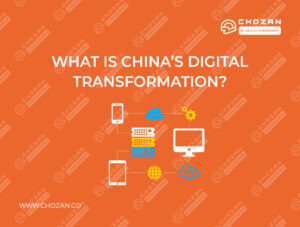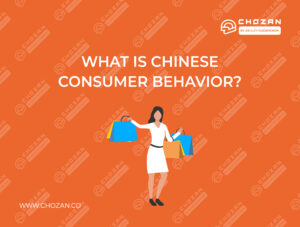Chinese consumer behavior seems to change faster than in other markets. Increasing exposure to and integration of social media in daily life play a significant role in this rapid change.
Generally, Chinese consumers shop as an enjoyable pastime rather than treating it as a chore, which is what most of their Western counterparts see “shopping” as. With their positive attitude towards shopping, it is therefore unsurprising for Chinese consumers to be natural “omnichannel” shoppers, which means they have no difficulty with e-retailers or brick-and-mortar shops. In fact, they prefer online shopping, with 75% of Chinese consumers shopping online compared to a global average of 21%.
Also, a key factor that distinguishes Chinese consumers from Western consumers is that they rely largely on social media and referrals before purchasing products, and they are also not shy about giving product recommendations. A quarter of Chinese online shoppers leave review about their products compared to less than 20% of product reviews in the US.
The market can also be quite complex as different groups and regions have different needs and may experience different trends. With their increasing consumption and purchasing power, understanding the preferences and mindsets of Chinese consumers is the key to the China market.
This article will shed some light on Chinese consumer behavior.
1. Chinese Consumer Demographic
China’s main consumer force is made up of people in their late 20s and early 30s. They’re called the “post 80s” generation, those born between 1980 and 1989. They not only buy things for themselves but for also for their parents and children.
China Business Review Report indicates that many consumers in this group will be the key consumers in the next decade. They’re generally better educated, tend to save less, spend more on entertainment than their parents and often shop online. They prioritize value and quality over low prices.
Most consumption comes from first and second tier cities, such as Beijing, Shanghai, Shenzhen, and other urban areas in China with high per capita income and strong purchasing power.
According to the outline of the government’s 13th Five-Year Plan, it’s estimated that 60% of the population will live in urban areas by 2020, which means 100 million more people will become urban consumers.
There’s a huge sales potential for brands.

↑Population distribution of working-age consumers in China. Source: BlackRock.
Online Senior
The online seniors refer to those who are over-60s, and nearly two-thirds of seniors are expected to be online by 2030. The pandemic has catalysed the increase in this consumer group by forcing seniors to adapt to a more digitalised setting for convenience and safety.
There are around 25 million seniors in China with middle to higher income brackets that drive e-commerce upward in different categories, especially housing, leisure, and health. And they are certainly making their presence known online, with Ali Research reporting that seniors’ monthly average users as one of the biggest consumer groups in China.
Metaverse Consumers
Metaverse consumers are consumers whose activity uses new digital spaces to socialise with their peers and establish their own unique online identities. This consumer group is more likely to explore new technologies and platforms that offer a unique online experience. Metaverse consumers are active in shaping their sense of identity so they participate in the construction of the metaverse.
Digital Natives
Generally born between 1980 and 2012, members of the “digital natives” group are mostly Gen Zs and millennials. In China, 29% of Gen Zs spend more than 6 hours on their gadgets and actively shopping or socialising on them. Video content is one of the most common content forms that this group consumes, and 40% of this group is categorised as spontaneous buyers.
Pet Lovers
The pet industry has gained a large boost in China in 2021, with numbers reaching as high as 68.44 million. Compared to the other ages, there has been a fundamental change in how pet owners have perceived their pets. The term “pets are the new kids” seems to be the most apt description of this phenomenon, and more pet lovers are readily spending more on their pets. 85.1% of Chinese pet owners consider their pets as family and more than half consider them to be in the same category as their children.
Domestic Tourist
Perhaps the greatest contributor to the increase in domestic tourism in China is the pandemic. With borders closed, Chinese consumers are forced to do local travel, with the “safe stay” concept at the core of it. In 2021, domestic trips increased by 3 percent on Labor Day compared to 2019, and Ctrip (China’s largest online travel agency) shows a 30% increase compared to past years.
2. Product Variety
In the past, function and price were the factors Chinese consumers cared about most. However, consumers are becoming more sophisticated and are increasingly taking a variety of criteria into account.
They’re trading up from mass market products to premium products. As living standards improve, people are focusing more on products with high quality and good taste.
For example, Chinese consumers are more health conscious and concerned about food safety issues so health food consumption is increasing. In terms of general categories, the top three consumer goods groups that people purchase are food and beverage, clothing and electronic products.

↑ Chinese consumers’ increasing desire for luxury products. Source: Vogue Business
Health-consciousness
More and more Chinese consumers have set a priority on more healthy products. In fact, Chinese consumers are considered to be the most health-conscious in the world. 73% of Chinese said that they are willing to pay higher prices for organic and healthy products which is 19% more than the global average. Health supplements and OTC health treatments have surged among Chinese consumers to aid a healthier lifestyle as urbanisation have increased the disposable income of citizens.
Luxury Market
Personal luxury goods in mainland China amounted to 471 billion yuan in 2021 which is double the pre-pandemic levels in China. This growth in luxury goods comes at the heels of the growth of duty-free stores. At Hainan for example, sales of luxury goods in duty-free stores had a 122% year-on-year increase since 2020 (around 60 billion yuan). More relaxed and business-friendly government policies have contributed to the proliferation of duty-free stores in China.
3. Global Brands vs Local Brands
The market is saturated with international brands and local brands.
Consumers are becoming more and more picky and have higher expectations. Consumers formerly made choices based on the popularity of a brand but now, more attention is paid to personal preference and value.
For beverages, local brands are more popular, but most consumers trust foreign brands when purchasing childcare and cosmetic goods. According to Statista, 57% of respondents tended to buy international brand cosmetics, while only 19% of people would choose local brands.
Due to status perceptions, Chinese consumers sometimes choose luxury brands for gift giving.

↑ Top 30 Chinese Global Brand Builders. Source: BrandZ™
Guochao in Fashion
China-chic or guochao has become a mainstay in Chinese trends especially towards the younger generations. Domestic brands have a natural edge in this area, and fashion is one key industry for guochao. In June 2022, Xiaohongshu recorded a staggering 15,945% increase for domestic, China-chic fashion brands alone. However, international brands are not being left behind in the guochao wave. International brand Gucci has changed its product line to be more reliant on Chinese cultural aspects with its collection “Gucci Tan”, adding Chinese-inspired images and designs in their bags, shoes, and other apparel items.
FMCG Products
In the FMCG sector, local brands are winning the competition compared to international brands. For packaged food & beverage and home care sectors alone, local companies have cemented their presence for Chinese consumers. They bank heavily on nostalgia for the past and are experts in capturing Chinese shoppers’ tastes.
4. Chinese value in marketing
Guochao Wave
A key trend for marketers to understand in China is the guochao wave. Essentially, this trend is about the celebration of Chinese culture and style, and with the growing nationalistic sentiment among Chinese youth, more guochao products are entertained. Guochao does not only cover physical products, but it itself is a concept that can be used in films, marketing, songs, or other forms of media. Incorporating Chinese cultural and aesthetic can be a huge boost to any brand in China, but cultural sensitivity is always central in ensuring that a brand does not go overboard with this trend.
Convenience is Key
Even before the pandemic, convenience has been central to China’s economy. A fast-paced, city lifestyle has necessitated the need for a convenience economy, such as food deliveries, e-commerce, or live streaming. In fact, 55% of Chinese consumers have stated that they prefer online grocery shopping compared to stepping out to physical stores and buying what they need. Ready-to-eat meals have also seen stark increased demands in recent years, even for holiday meals or for simple dinners with the family. Aside from products, anything that could be delivered or done in the comfort of a consumer’s home drives the convenience economy, such as fitness apps or virtual showrooms for brands.
Brand engagement & experience
China’s O2O shopping ecosystem has created a venue that allows consumers and brands to further engage and interact with each other. Chinese consumers place emphasis on brand engagement or experience, and they flock towards those who can give them an unforgettable positive experience. Brand engagement does not only expose brands to consumers, but it also helps cultivate brand loyalty and increased awareness while at the same time engaging their customers. Gamification, photo booths, pop-up shops, product try-ons, limited edition goods, or pretty store aesthetics can all help in leaving an imprint in the minds of Chinese consumers.
Word of mouth
Moreover, opinions from other consumers seem more important than before to influence purchasing decisions. By only spending a few minutes on reviews and comments on e-commerce apps, consumers can find out about the product and service.
Social recommendations are more powerful than traditional advertisements. What’s more interesting is that when Chinese consumers buy online, they value other fellow shoppers’ opinions more than key opinion leader’s opinions. Therefore, brands need to pay attention to their reputation and maintain positive word of mouth.

↑ Top 30 Chinese Global Brand Builders. Source: BrandZ™How China e-commerce shoppers value recommendations Source: TMO Group
5. Retail Channels
China has more than 926.8 million monthly active users on social media (by 2022, it’s expected to breach the 1 billionth mark) and 905 million consumers shopping online using sites such as TaoBao, Tmall, JD, and Xiao Hong Shu. Mobile payment systems like Wechat Wallet make online shopping easy. It’s become a trend for some and a lifestyle for others. According to the National Bureau of Statistics of China, in 2021, the total retail sales of e-commerce consumer goods reached 44,082.03 billion RMB.
E-commerce has taken off, but traditional shopping and marketing hasn’t died. Shopping in malls and standalone stores is popular and many Chinese people even go abroad to buy luxury goods in person.

↑ Online shoppers are more likely to visit a physical store before making a purchase than shoppers in physical stores to visit an online store.
Understanding your target audience is essential, on and off line. Designing marketing strategies that fit your target user’s needs and preferences can make all the difference.
How does consumer behavior differ among groups and regions in China? What are the differences between impulse buyers and rational buyers? How can you adapt your brand to the changing Chinese market?
If you have any queries, please leave a comment or download our free e-book about modern Chinese consumers.
Read more related posts
-
China Trendwatching: What Brands Can Learn From Chinese Consumers' Growing Interest in Healthy Living
There's been an increase in awareness of health and wellness topics in China. It started even before Covid. Chinese health information platform Dingxiang Yisheng's 2019 National Health Insights Report (2019国民健康洞察报告)…
-
China Leaps Into the Brave New World of New Retail
Alibaba is playing a key role changing the face of retail in China and, probably, the rest of the world. During November’s Double 11 Global Shopping Festival, or Single’s Day,…
-
A Comprehensive Overview: Douban
Douban is an interest-based social networking platform. It’s seen as a combination of Goodreads, IMDb, Blogger, Facebook, Pandora, Spotify, Ello and Fancy.com. So what is Douban like? How do people…
-
China Trendwatching: What Brands Can Learn From Chinese Consumers' Growing Interest in Healthy Living
There's been an increase in awareness of health and wellness topics in China. It started even before Covid. Chinese health information platform Dingxiang Yisheng's 2019 National Health Insights Report (2019国民健康洞察报告)…
-
Three Top Tips for Marketing to Chinese Outbound Tourists
China’s economy has been on the rise for decades. Improved living standards, a growing interest in tourism and relaxed travel regulations for Chinese citizens has led to a huge rise…








